The ESMO Congress 2024 is ongoing in Barcelona, from September 13 to 17, 2024, at the Fira Barcelona Gran Via.
This significant event, organized by the European Society for Medical Oncology (ESMO), attracted over 30,000 participants, including healthcare professionals, researchers, patient advocates, and industry representatives from around the globe.
Sumanta Pal shared some insights from ESMO24:
The role of DLL3 in neuroendocrine prostate cancer
“Crystal clear talk from Misha Beltran highlighting role of DLL3 in neuroendocrine prostate cancer. Although some of the early data with tarlatamab may not be very supportive, eager to see MK6070 – interesting signal in NEPC.”
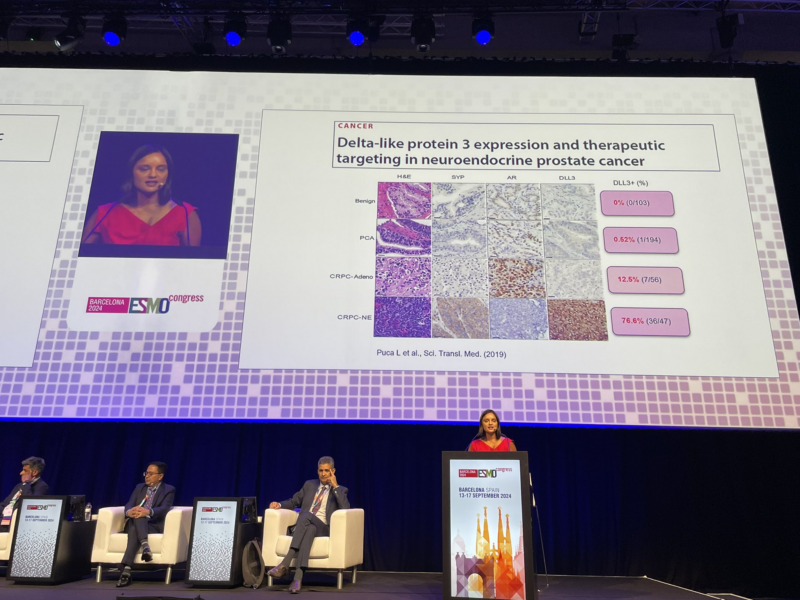
Overview of BiTEs in prostate cancer
“Terrific overview of BiTEs in prostate cancer at ESMO24 by Neeraj Agarwal, Huntsman Cancer Institute. PSMA, STEAP1, DLL3 and other targets being exploited with varying levels of success.
Beautiful comprehensive tables included in his talk that give immediate perspective of the status of bispecific and trispecifics – ESMO fellows in attendance – great reference here!”

Huge congrats to Pedro Barata, who drove this important analysis of SWOG 1500, published just ahead of ESMO24 in Journal of Clinical Oncology. Lots of dialogue here in Barcelona around management of nonclear kidney cancer; I think this paper and data from SUNNIFORECAST are impt parts of the dialogue…
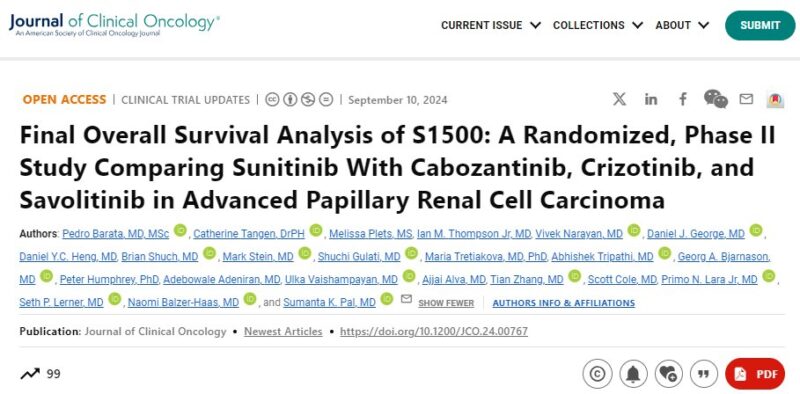
In this final analysis of OS from S1500, we show no OS advantage with cabozantinib over sunitinib. PFS and OS curves are shown below. The PAPMET data have inspired PAPMET2, led by Benjamin Maughan, Huntsman Cancer Institute, which I will discuss shortly.

So what is the current standard for nonclear cell kidney cancer, and perhaps more specifically papillary?
SWOG1500 showed that we can do randomized studies in this space, but many of our dialogues today are fueled by single arm experiences.
Neeraj Agarwal, Bradley McGregor and I (along with others) have looked at cabozantinib with atezolizumab, and Kelly Fitzgerald recently updated data for cabozantinib with nivolumab in European Urology. Impressive RRs and both with a RR in papillary of 47%.
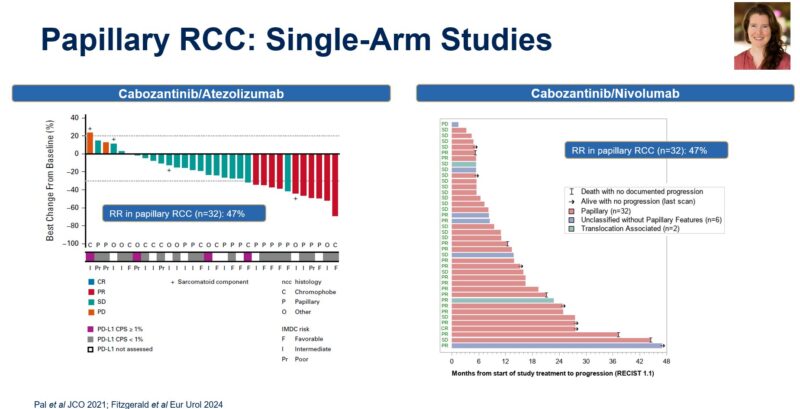
There are other VEGF-IO studies. Bradley McGregor has published the data for bevacizumab with atezolizumab (more modest RRs) and Laurence Albiges has published data for lenvatinib with pembrolizumab in KEYNOTEB61. But do these single arm studies reflect SOC?
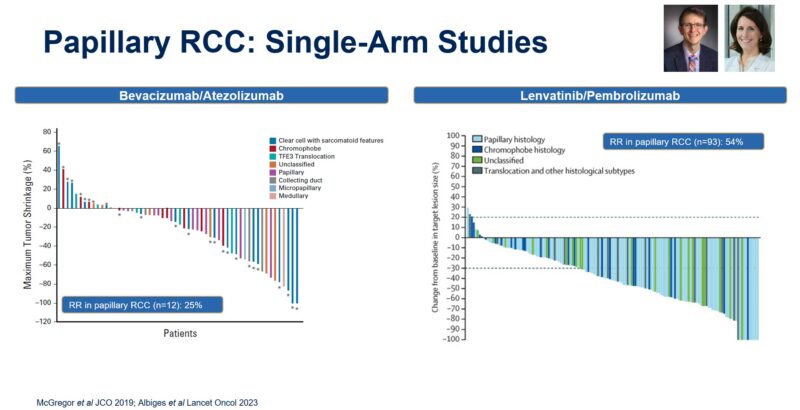
In my mind, definitely not. We have proven that we CAN do randomized studies in papillary kidney cancer, so we must do them to ensure we are not (a) offering additional therapy without confirmed advantage and (b) not causing undue harm. Now onto SUNNIFORECAST from ESMO24.
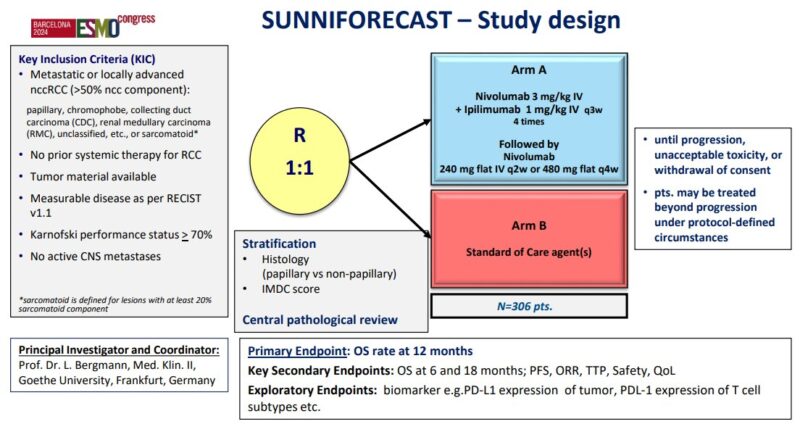
While I applaud the investigators for conducting a randomized study in this setting, I think we have to concede that the primary endpoint (1-year OS) is unconventional. Looking at the data in amalgam, there is no difference in PFS or OS with nivolumab and iplimumab.
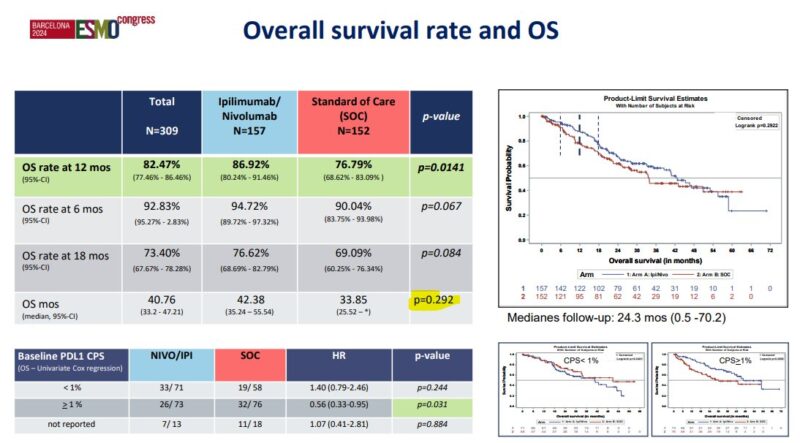
And while there were some groups of interest (e.g., high PDL1 expressors), this was a very heterogeneous group of patients. Could the smattering of pts with sarcomatoid features have driven outcomes? Were there pts where these features were unrecognized? And what was the contribution of the exquisitely rare subtypes which likely carry a completely unique biology?
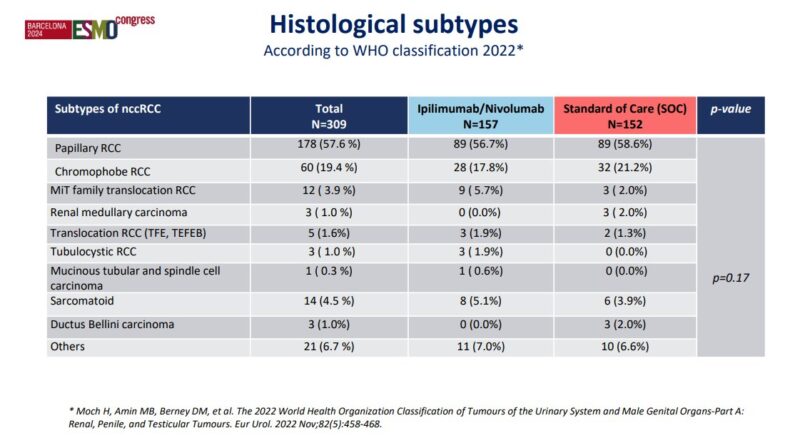
I definitely don’t think nivolumab/ipilimumab moves into the category of established standard. As a community, I think we need renewed focus on some of the randomized studies that are currently ongoing which may more definitively establish the role of doublet therapies. We also need to understand the role of biological selection – e.g., in papillary kidney cancer, should we be using MET status to allocate therapy?
Toni Choueiri, Tom Powles et al. have contributed greatly to our understanding of savoltinib alone and (in single arm studies) combinatino with durvalumab.
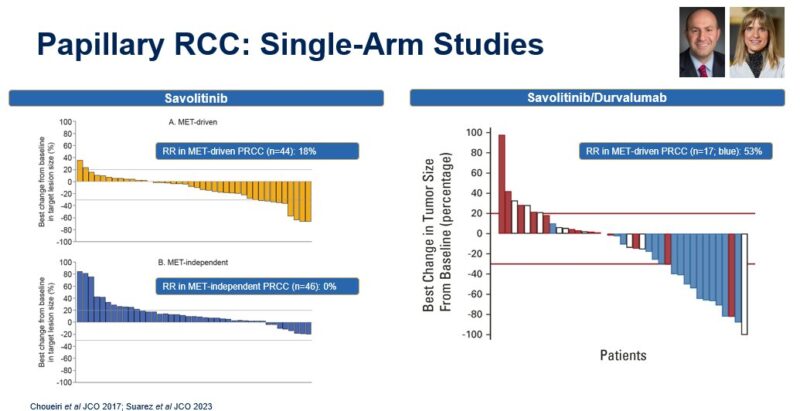
So what are those randomized trials? I’ve summarized them here. PAPMET2, STELLAR304, SAMETA and several others require our attention as a community. It’s imperative that we definitively establish the role of TKI/IO regimens for papillary kidney cancer and other nonclear cell types.
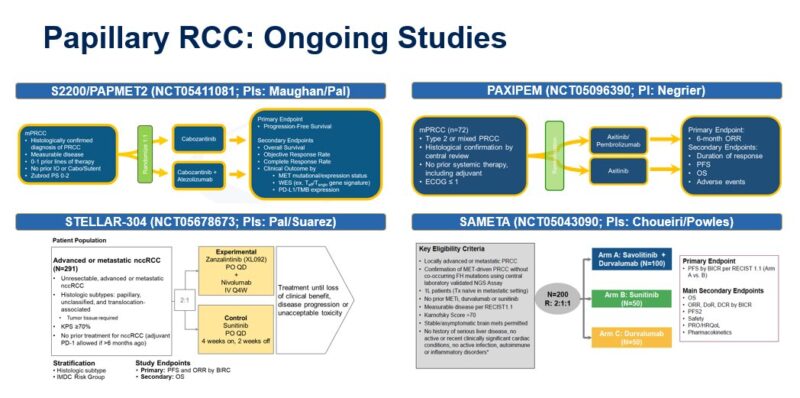
Patients with papillary and nonclear kidney cancer deserve the utmost thanks for participating in these efforts. I would also like to thank groups like KCCure and Kidney Cancer who have brilliant trial-finding tools online! If you are at ESMO24 and would like to continue this dialogue in person, DM me!”
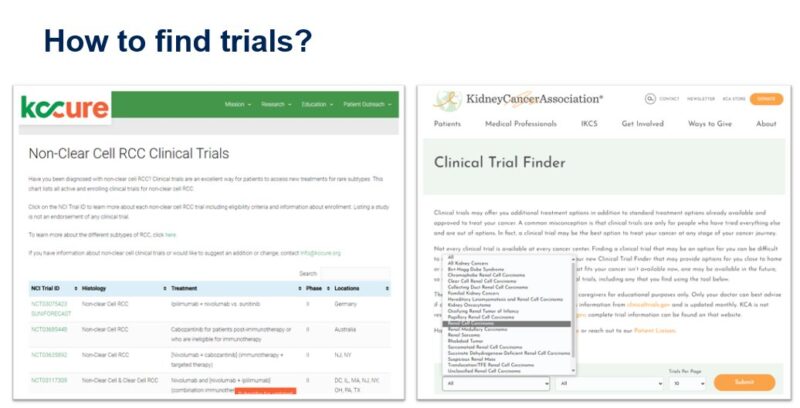
His former City of Hope research fellows
“Wanted to give a quick shoutout to my two former City of Hope research fellows Cristiane Bergerot and Paulo Bergerot. We starting working together more than a decade ago. Now, Paulo is developing programs to formally assess exercise in oncology within Brazil.
Cris leads supportivecare at Grupo Oncoclínicas and continues to represent one of the foremost authorities in psychooncology – it has been remarkable see her grace the podiumat ANZUP24, WCLC24, ASCO24 and now ESMO24, all within a span of 3-4 months, all with distinct topics/projects/findings. Incredible progress and I feel this is just the beginning.”
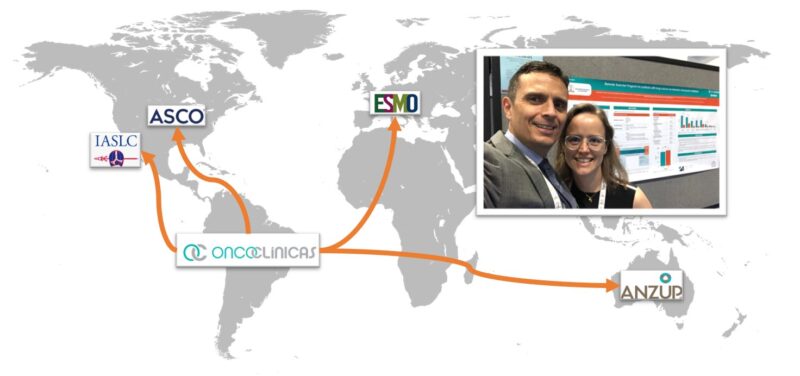
Reviewing Dr. Ciccarese’s presentation
“Not going to give anything away here, but just spent some time with Chiara and Roberto Iacovelli at ESMO24 reviewing Dr. Ciccarese’s presentation. Their randomized trial of axitinib/pembrolizumab with FMT is done rigorously with fascinating results!
You will not want to miss this. So pleased to see so many sessions incorporating the microbiome at this meeting. Join us tomorrow (Sunday) in the Bilbao Room in the kidney cancer and bladder cancer mini-oral sessions at 8:30 am!”

Beautiful presentation by Chiara
“Bravo! Chiara – beautiful presentation. Congrats to you, Roberto Iacovelli and the stellar team on intriguing data – a hugely important contribution to the emerging data on #microbiome modulation. Looking fwd to seeing next steps!”
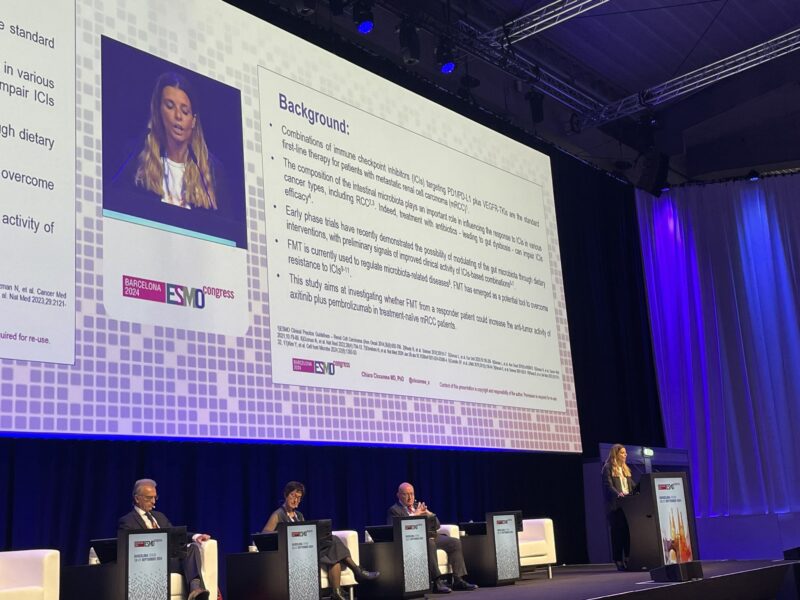
“I did come check out the poster! And so glad I did. Terrific data, Arielle Elkrief. I’ve circled in red and highlighted some of the key findings. The bottom line is that her prospective trial of FMT in lung cancer and melanoma in patients receiving CPIs shows a strong signal of heightened response.
Via CCTG she will be launching the first large randomized trial formally assessing the role of FMT. So exciting!”
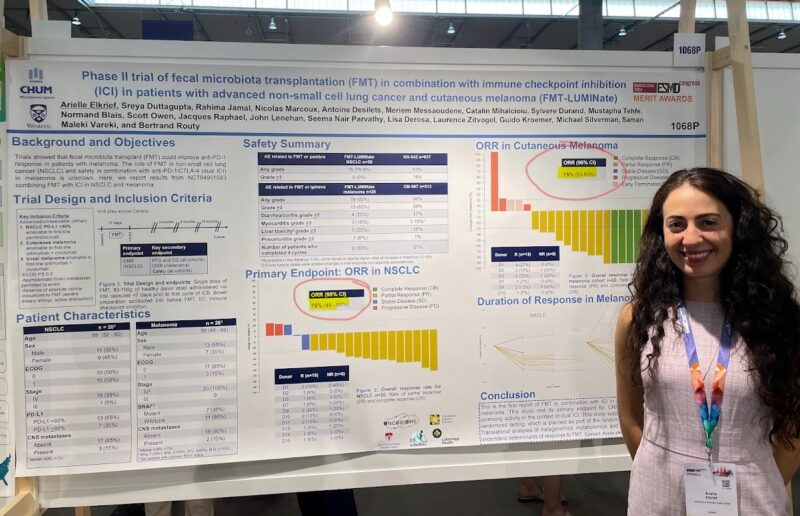
ESMO presentation and a concomitant NEJM paper
“Huge congrats to Andrea Apolo, Guru Sonpavde, Jonathan Rosenberg, William Kim, Stephanie Berg and the Alliance for Clinical Trials in Oncology team on a terrific ESMO presentation and a concomitant NEJM paper! A very exciting ESMO24 indeed!”
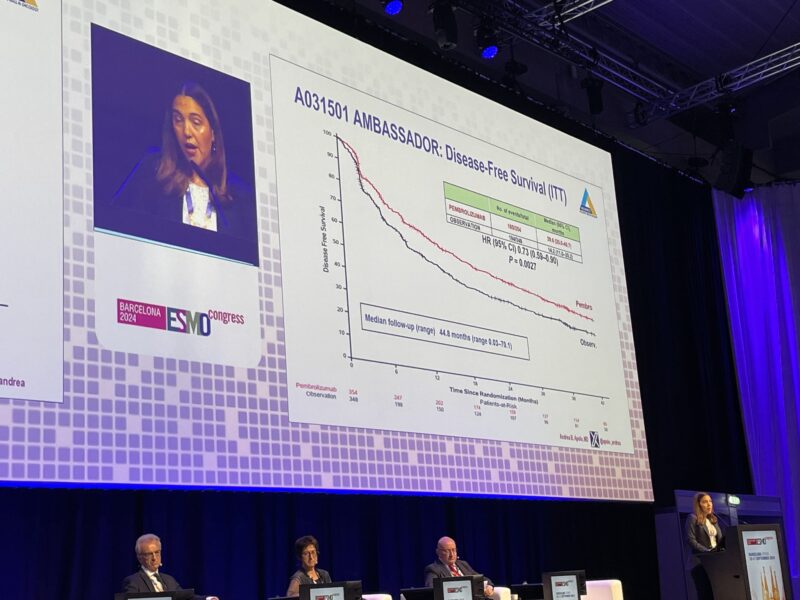
“At ESMO24 I got to experience again the amazing gift David Braun, Yale Cancer Center has for taking complex science and distilling it in a manner relevant to a clinical audience. Super compelling data from CM9ER evaluating cabozantinib nivolumab suggesting a potential predictive role of glycosylation of certain complement mediating peptides.”
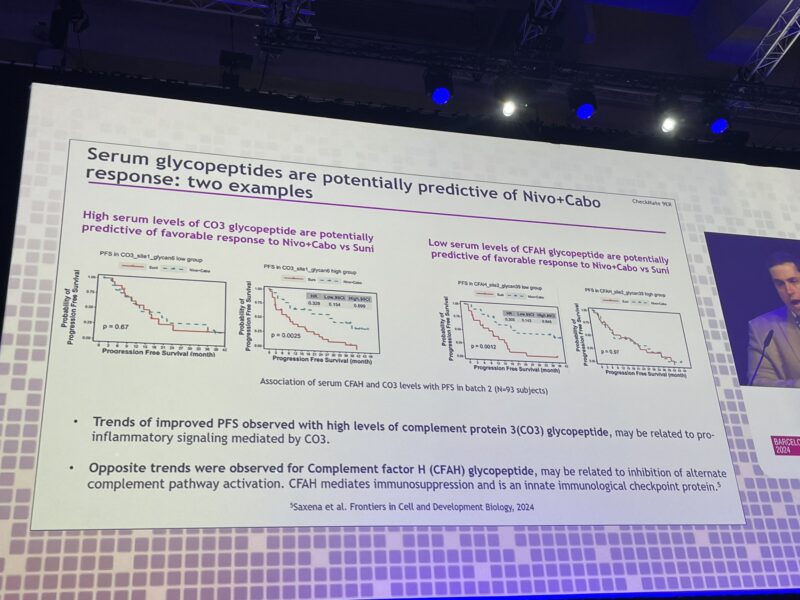
Bladder cancer mini-orals at ESMO24
“Bladder cancer mini-orals at ESMO24. Terrific talks from Vadim Koshkin, (addressing FGFR3 pos dz), Tom Powles, Barts Experimental Cancer Medicine Centre (role of NECTIN4 in EV302) and Matt Galsky, Mount Sinai Health System (disitimab/pembrolizumab). Incredibly informative talks all around – perfectly executed!”
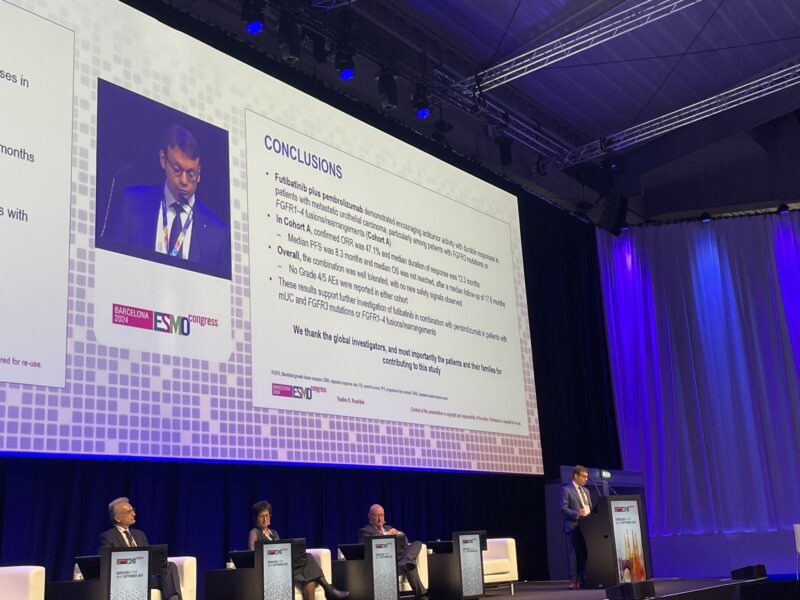
Sumanta (Monty) Pal, MD, is a medical oncologist and an expert in genitourinary cancers at the City of Hope Comprehensive Cancer Center in Los Angeles. He serves as the Vice Chair of Academic Affairs, Professor and co-director of the Kidney Cancer Program and leads the Kidney and Bladder Cancer Disease Team at City of Hope. He specialises in kidney, bladder, and prostate cancers.
More posts featuring ESMO24 on oncodaily.com
